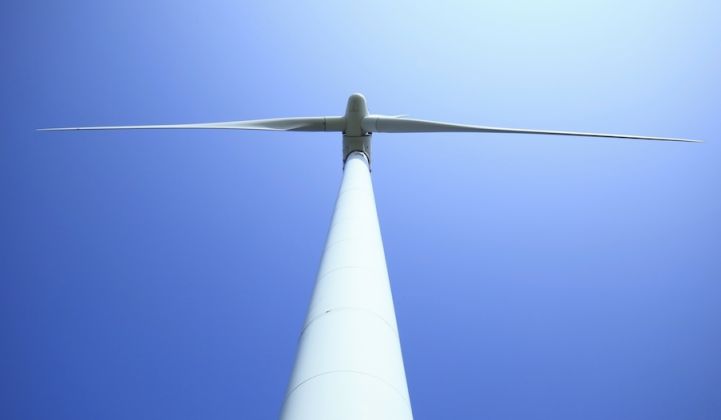Technology investments will help the wind industry add more than 680 gigawatts of capacity worldwide in the next decade, according to two reports this month.
The studies, from the analyst firm Wood Mackenzie Power & Renewables, show how the industry could easily more than double the 539 gigawatts of capacity installed worldwide at the end of 2017, based on World Wind Energy Association figures.
Wood Mackenzie’s Global Wind Turbine Technology Trends predicts original equipment manufacturers (OEMs) will invest heavily in measures to bring down the levelized cost of electricity (LCOE) of wind as developers face decreasing returns from a rise in auctions.
After cutting the average selling price per megawatt by 28 percent since 2010 and increasing annual energy production per megawatt by 50 percent over the same period, OEMs are now focused on getting wind’s LCOE to under $34 per megawatt-hour, Wood Mackenzie believes.
“Now that auction systems are driving down power prices worldwide, product and service evolution is paramount,” said the report’s lead author, Shashi Barla, a senior analyst at Wood Mackenzie Power & Renewables.
“While the shift away from generous incentive mechanisms leads to a short-term market dip, the forecasted growth over the next decade makes the market ripe for innovation.”
He said new turbine products would continue to be introduced at a rapid pace at least until 2020. Already global onshore wind markets are moving from 3-plus megawatt to 4-plus megawatt machines “with barely a chance to recoup tooling costs,” Barla said.
The larger turbines were originally expected to sell only into European wind markets but are now being touted in the U.S., Latin America and other territories over the next two years, he said.
The need to pour large sums into technology innovation looks set to give larger OEMs a competitive advantage, Wood Mackenzie’s forecasts reveal.
Barla said the global market share of the top five turbine OEMs is set to rise to more than 73 percent by 2027, compared to just 54 percent in 2016. With shorter product cycles, these OEMs will also look to focus on fewer product variants.
Hence wind farm developers can expect more value, but less choice. That shouldn’t be an impediment to market growth, though.
Another Wood Mackenzie report, the Global Wind Power Market Outlook Update: Q4 2018, forecasts 680 gigawatts of new wind capacity will be installed from 2018 to 2027.
The analyst firm said it had upped its 10-year estimate by 2 percent since its update last quarter, adding an extra 2.7 gigawatts of capacity a year to the installation estimates from 2020 to 2023.
The revision was mainly a consequence of a growing global appetite for offshore wind, said Wood Mackenzie.
Europe is expected to have around 16 gigawatts of offshore wind by the end of this year but will add a further 47 gigawatts over the next decade, according to lead author Luke Lewandowski, Wood Mackenzie’s director of Americas power and renewables research.
“The European offshore wind power experience has encouraged governments in other regions to support offshore wind to comply with carbon reduction strategies and renewable energy targets as well as more firmly secure domestic power supply,” he said.
Japan and South Korea have already signaled interest in developing the technology. Each country is expected to install more than 2 gigawatts of offshore wind within the next decade.
In the U.S., meanwhile, offshore wind capacity is expected to top 10 gigawatts by the end of 2027. This will represent about 15 percent of all new wind capacity additions in the country, which is only expected to see modest growth onshore.
Elsewhere in the world, Wood Mackenzie notes that conservative election wins may threaten the outlook for wind in Brazil and Canada. Australia, meanwhile, has had its forecast tweaked upwards.
And in Europe, the Scandinavian region has seen estimated additions increase by 5 gigawatts over the next 10 years, as a result of a flurry of project investment announcements and power offtake commitments.
Sweden, Norway and Finland will account for 15 percent of new onshore capacity installed in Europe over the next 10 years, Wood Mackenzie said.
***
Learn more about Wood Mackenzie's global wind research here.




